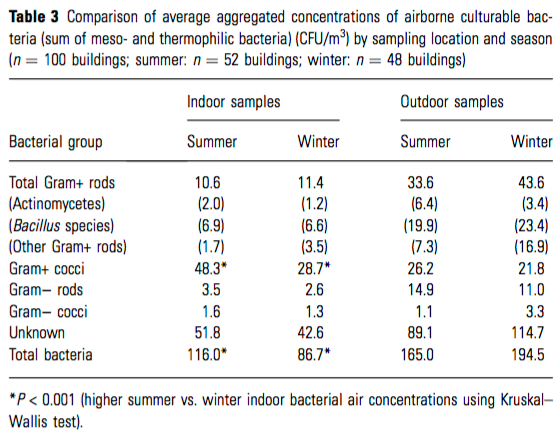The number of cultivatable bacteria in a typical office environment is about 100 per cubic meter, somewhat lower than outdoor levels:

From Concentrations of airborne culturable bacteria in 100 large US office buildings from the BASE study
Hospitals show higher levels of cultivatable airborne bacteria, around 720 per cubic meter[1] .
But if you really want to breathe in lots of bacteria, a pig farm is the place to go. A single pathogenic species, S. aureus, was detected at about 1600 per cubic meter[2] in Swiss pig farms. And it’s worse than that. Most bacteria can’t be cultivated, so these numbers are an undercount. When copies of DNA are counted, rather than cultivatable organisms, the number of bacteria per cubic meter on the pig farms skyrocketed to several billion per cubic meter.
The average breath takes in about 0.5L of air[3] . There are a thousand liters per cubic meter. So the number of cultivatable bacteria (which includes most human pathogens aka “germs”) that you take in is pretty low, about one per twenty breaths. But when all bacteria are included, every breath takes in a few million bugs.
Garbage smells are definitely generated by the growth of bacteria. I’d guess that the concentration of germs near garbage is somewhere between the level found in hospitals (a few hundred per cubic meter) and pig farms (a few thousand per cubic meter).
Featured on Forbes
Footnotes
[1] Assessment of the Levels of Airborne Bacteria, Gram-Negative Bacteria, and Fungi in Hospital Lobbies
[2] Concentration of Airborne Staphylococcus aureus(MRSA and MSSA), Total Bacteria, and Endotoxins in Pig Farms
[3] Lung volumes
